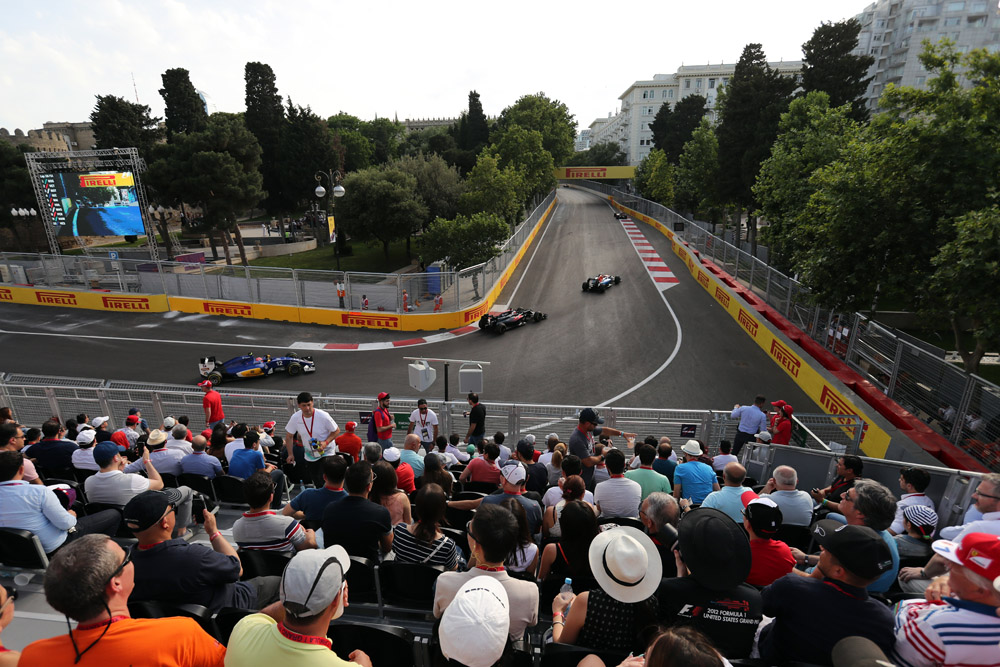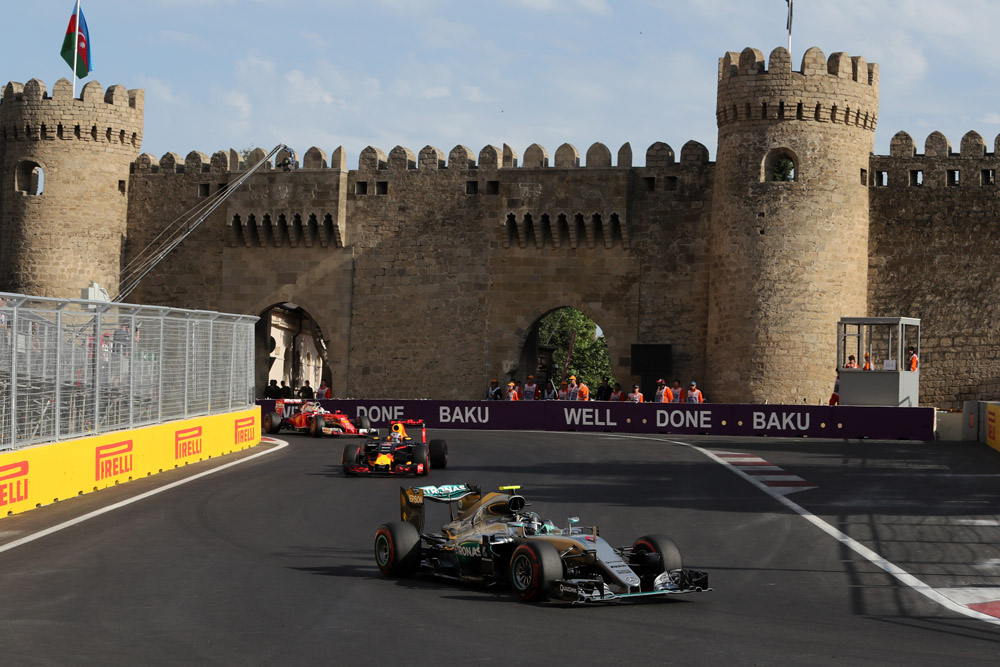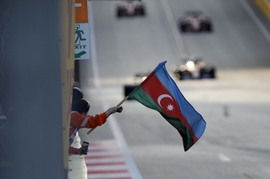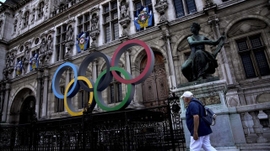Azerbaijan is ready to roll and host the 2017 Formula 1 Azerbaijan Grand Prix racecar competition from June 23-25, as construction for the racing circuit is in the final stage, a senior official of the event said a week ahead of the race.
“Currently, we are at the final stage of the construction work. Starting from 01:00 June 19, main streets of the city will be cordoned off for completion process,” the head of venue delivery and facilities management at Baku City Circuit Operations Company, Tom Butcher, told reporters on June 16.
The Baku City Circuit is one of the longest street circuits in the F1 racing calendar, where drivers will race 51 laps along six kilometers. Consisting of 20 turns, some which can handle a maximum speed of 340 kilometers per hour, the circuit is as much a speedway as it is a trail through Azerbaijan’s history, culture, and architectural splendor.
The circuit is constructed near Baku Boulevard, right along the city’s picturesque sea front on the western shore of the Caspian Sea, combining historical buildings with architectural modernity. The F1 race will start from Freedom Square, near the grandiose Government House, and pass by the Palace of the Shirvanshahs, constructed in the 15th century and recognized by UNESCO as a “pearl of Azerbaijan's architecture.”
The narrowest point of the course, which is just 7.6 meters wide, is situated along the outskirts of the old city, Icheri Sheher, considered the historical center of Baku, as it contains several historical and architectural monuments surrounded by medieval walls. The track will also pass near Baku’s foremost architectural icon, the 12th century Maiden Tower, enshrined in dozens of local tales and legends. Together with the Palace of the Shirvanshahs and Maiden Tower, the old city was included in UNESCO’s World Heritage List of Historical Monuments in 2000.
The track will also pass a more modern landmark, nonetheless impressive and iconic, known as Ismailiyya Palace. Designed in the Venetian Gothic style and built in the first decade of the 20th century during Azerbaijan’s oil boom, the building was constructed for the Muslim Charity Society and paid for by an Azerbaijani oil baron who wanted to immortalize his son Ismail, who died of tuberculosis.
Another landmark built during the oil boom and lying along the F1 circuit is Hajinski mansion, built from 1910-1912 by oil tycoon Isa Hajinski. French General and President Charles de Gaulle once stayed there while en route from Tehran to Moscow in 1944, during World War II.

Other turn-of-the-century buildings that grace the track include the Baku Puppet Theatre, located on Neftchiler Avenue and built in 1910 by the Polish architect Józef Plośko, as well as the Baroque-styled residence and offices of Baku’s mayor, whose design was influenced by the layout of the Hotel de Ville in Paris.
The negative impacts of modernity on Baku’s historical landmarks have not been lost on city officials. As racecars are expected to hit speeds of up to 340 km/h, ancient stone roads throughout the city have been completely resurfaced with a special asphalt cover that can be removed once the Grand Prix is over.
Baku is hosting what is the eighth segment of the 2017 FIA Formula One World Championship, the 71st season of Formula One motor racing. Teams and drivers are competing in twenty Grand Prix, which began at the Melbourne Grand Prix Circuit in Melbourne, Australia on March 26, and will end at the Yas Marina Circuit in Abu Dhabi, UAE on November 26.
In the 2016 European Grand Prix held in Baku, Finnish driver Valtteri Bottas reached the highest-ever recorded speed in an official Formula One session, at 378 km/h, exceeding the previous record of 369.6 km/h set by Antonio Pizzonia at the 2004 Italian Grand Prix.
About 30,000 spectators are expected to watch this year’s race, being staged in the Azerbaijani capital for the second time, from grandstands and standing areas along the route. According to Baku City Circuit Head of Marketing and Communications Nigar Arpadarai, tickets have been bought in 57 countries, with the largest number of sales coming from citizens of Azerbaijan and Russia.







 Iranian President Ebrahim Raisi expressed Tehran’s readiness to participate in significant development projects in Sri Lanka during the inauguratio...
Iranian President Ebrahim Raisi expressed Tehran’s readiness to participate in significant development projects in Sri Lanka during the inauguratio...
 Iran and Pakistan have signed eight cooperation documents in various fields, and agreed to strengthen ties to fight terrorism in the region.
Iran and Pakistan have signed eight cooperation documents in various fields, and agreed to strengthen ties to fight terrorism in the region.
 As the conflict between Ukraine and Russia escalates, the strategic importance of Kharkiv, Ukraine's second-largest city, has come sharply into focus.
As the conflict between Ukraine and Russia escalates, the strategic importance of Kharkiv, Ukraine's second-largest city, has come sharply into focus.



